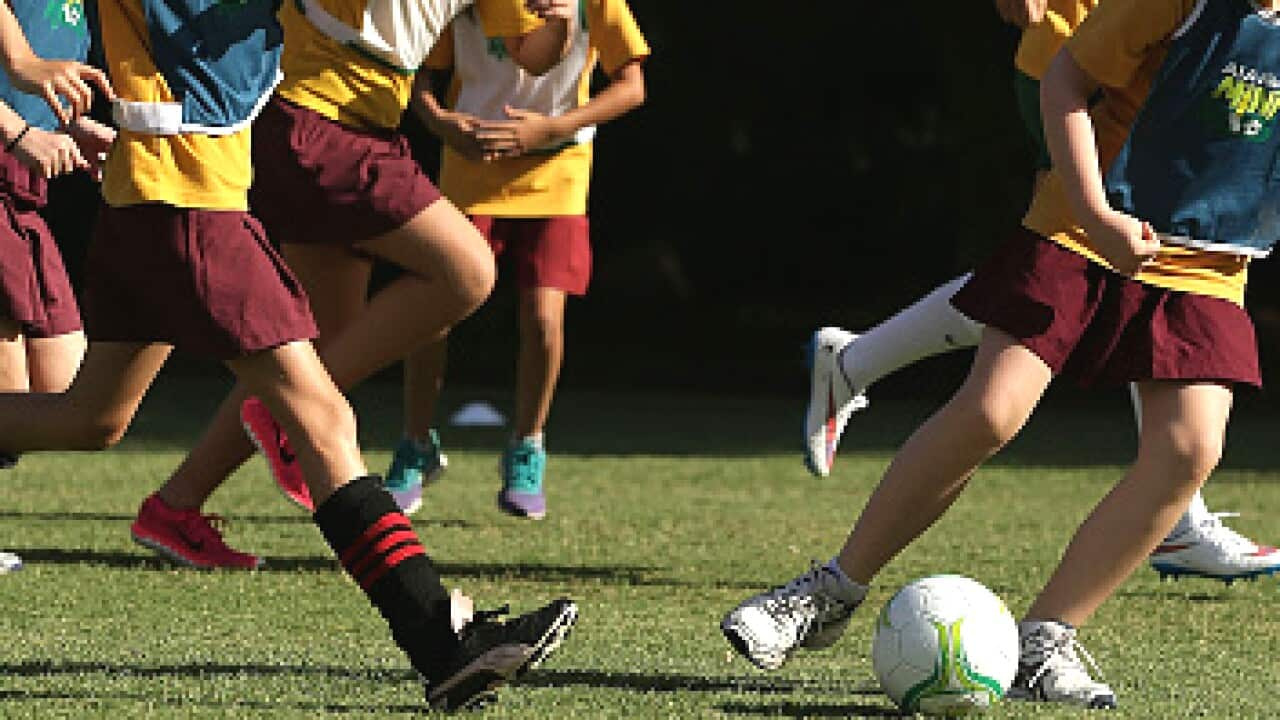Since 2000, knee reconstruction surgery has jumped by 70 per cent in people aged over 15.
And, it’s not just a problem impacting teens and adults but kids too.
In fact, the biggest increase in such surgeries has been experienced in children aged between the ages of five and 15.
Dr Christopher Vertullo is the head of Knee Research Australia and he says the high rates are partly because Australians play high-intensity sports all year round and also as a nation we’re getting heavier.
“It’s quite sad. I see people as young as six and eight tear their ACLs [anterior cruciate ligament]. And it's really quite heartbreaking as a parent and a surgeon knowing that some of these could be prevented, " he says.

Brianna Davey of the Magpies is seen after injuring her ACL during the Collingwood training session at the Holden Centre in January 2022. Credit: Dylan Burns/AFL Photos/AFL Photos via Getty Images
“So we really need to talk about how we can prevent this. A lot of these injuries are preventable - about 50 per cent of ACL ruptures you can prevent.”
"And so Australian orthopedic surgeons have been advocating for almost a decade for a national sports injury prevention program where we can actually do a 30-minute agility training program three times a week for people playing high risk sports.
"And we could actually drop those injury rates by up to 50 per cent, up to 80 per cent."
Even with prevention, that still leaves thousands of knee surgeries being performed each year and that road generally means a person’s knee will never really be what it once was, leading to cartilage damage and potentially osteoarthritis.
But now a rabbit on a treadmill in the US is sparking new hope that strength might be able to be restored in damaged knee cartilage.
Associate Professor Thanh Nguyen works in the Biomedical Engineering department in the University of Connecticut and his lab has been working on cartilage regeneration.
They’ve discovered that electrical signals help spark normal growth in the knee joint meaning the cartilage doesn’t end up weaker than before the injury.
“I think we achieved something significant that helped us to keep moving forward and testing this,” Mr Nguyen says.
His team have designed a tissue scaffold made out of biodegradable nanofibres– the same material used to stitch up surgical wounds.
That nanomaterial has an element that gives off a sort of zap to the knee every time the leg moves, like when you walk. The more you walk, the more it creates a steady electrical field that acts like a beacon for cells in the body to migrate towards the knee.
“All it does is pop up a little bit of electrical signal that it actually attracts the stem cell in your own body to move in and, and help to regenerate the cartilage,” Associate Professor Nguyen says
The result is a rabbit with healthy knee cartilage hopping on a treadmill after the implant had been inserted into its injured leg.

A white rabbit on a treadmill, (r) tissue scaffolding made of nanofibres.
“The research around this type of injury has been littered with many, many, many disappointments that had promising results in animal studies. It just didn't translate into humans because we're very different from rabbits.
But when it comes to the alarming numbers of children ending up with knee surgery perhaps it’s not just a problem for science to solve but one for parents and coaches too.
Some simple stretching and agility training could go a long way to helping kids be kids instead of them being left with wear and tear beyond their years.


